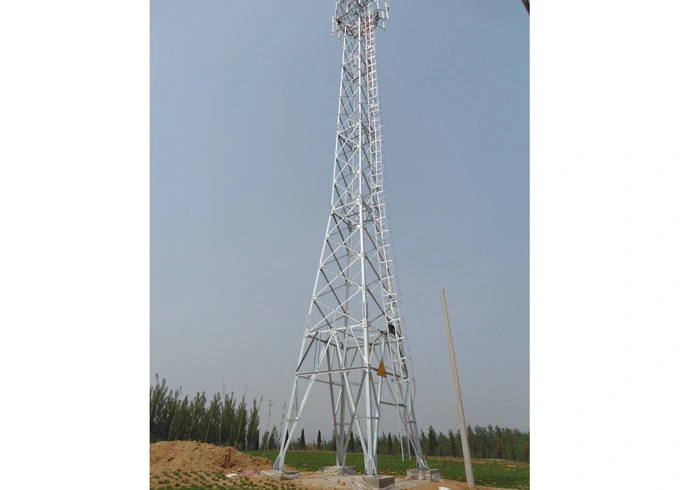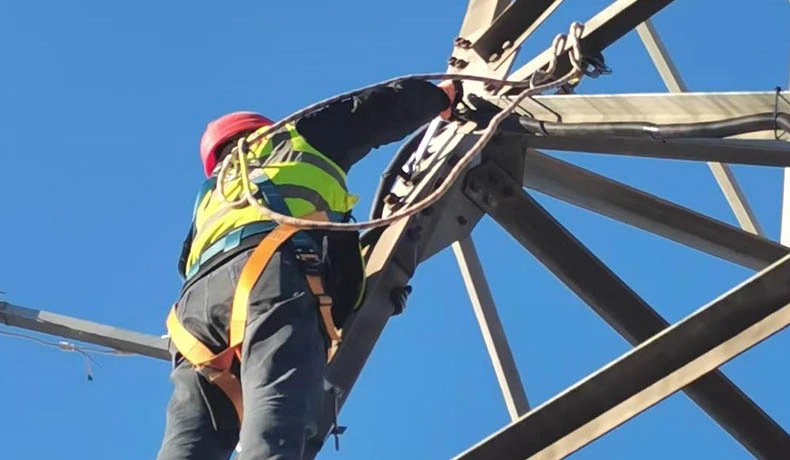Telecommunication networks stretch across deserts. Power lines traverse mountains. What keeps these critical systems standing? The answer lies in a century-old engineering marvel most never notice – angular steel towers. Angular steel towers use bolted angle iron sections arranged in lattice configurations, offering unmatched structural integrity and cost efficiency for power transmission and telecom installations in harsh environments. Their modular steel framework withstands extreme weather while maintaining low material and labor costs compared to alternatives. While newer tower designs grab headlines, project managers worldwide still choose angular steel towers for one simple reason – they deliver performance without compromise. Let’s examine why this "old reliable" remains modern infrastructure’s backbone.

Picture metal erector sets scaled to industrial proportions. Angular steel towers by steel tower factory rise through precisely connected L-shaped steel members forming rigid three-dimensional lattices, creating skeletons that laugh at gravity and gale-force winds. Angular steel towers are lattice structures built from hot-rolled angle iron sections bolted or welded into triangular modules, providing maximum strength-to-weight ratios for tall support structures. Their open framework design resists wind forces while requiring less material than solid alternatives.

Base Section: Anchor bolts secure the tower to concrete foundations
Leg Members: Primary vertical load-bearing components
Bracing System: Diagonal/web members prevent lateral deflection
Cross Arms: Horizontal supports for cables/conductors
| Component | Material Thickness | Typical Coating |
|---|---|---|
| Main legs | 6-12mm | Hot-dip galvanized |
| Bracing elements | 4-8mm | Zinc spray + paint |
| Connection plates | 10-16mm | Galvanized pre-drilled |
Seen those forest fire photos where only metal towers stand amid scorched earth? There’s your durability proof. But survival isn’t angular towers’ only trick – their benefits multiply during installation and operation. Angular steel towers provide superior load capacity, wind resistance, and terrain adaptability at 30-50% lower lifetime costs than tubular or concrete alternatives, making them ideal for remote infrastructure projects. !
Material Efficiency: Lattice design uses 40% less steel than solid structures
Transport Friendly: Disassembled components fit standard containers
Rapid Assembly: 6-person crew can erect 50m tower in 3 days
Minimal Maintenance: Galvanized steel resists corrosion for 40+ years For a wind farm project in Inner Mongolia, we delivered 87 towers that withstood -40°C winters and 35m/s winds while cutting foundation costs by $12,000 per unit – savings that convinced the client to expand the project.
No solution fits every scenario. While angular steel towers excel in most situations, site-specific factors sometimes suggest alternatives. Angular towers require more land area than monopoles and periodic inspection of bolted connections, making them less suitable for space-constrained urban sites needing minimal maintenance.
High-Density Areas: Larger footprint vs slim monopoles
Aesthetic Demands: Lattice looks industrial vs concealed cables in buildings
Vandalism Risk: Exposed structure in unsecured locations We advised a Middle Eastern client against angular towers for a beachfront resort installation. The solution? Custom-painted monopoles blending with palm trees – proving even the best tools work better when matched to context.
Deciding between tower types feels overwhelming. Focus on three core questions – budget constraints, environmental challenges, and long-term operational goals. Choose angular steel towers if your project involves remote locations, extreme weather exposure, or requires future capacity expansion through modular upgrades.

Site accessibility for assembly crews
Maximum wind speed/ice load requirements
Planned structure lifespan (>25 years)
Expansion/conversion potential For over 60% of our clients, angular towers prove optimal. The rest? We design hybrid systems combining lattice bases with tubular upper sections – because smart engineering always beats one-size-fits-all solutions.
Angular steel towers remain the pragmatic choice for durable, adaptable infrastructure – a truth proven across 1.3 million installations worldwide. Their timeless design continues evolving to meet new challenges, blending tried-and-tested principles with modern engineering insights. At Junjiang angle steel tower factory, we see angular steel towers as a time-tested solution that continues to play a vital role in both telecommunication and power transmission infrastructure. Their lattice structure, assembled from angle steel sections, offers excellent load-bearing performance and wind resistance while remaining cost-effective. With modular design flexibility and ease of transport and installation, angular towers are especially ideal for projects in remote or uneven terrains. Having engineered and exported thousands of angular towers globally, we understand that combining structural strength with practical versatility is what makes this tower type a smart choice for long-term deployments. Our commitment is to deliver solutions that meet technical demands and maximize return on investment.
